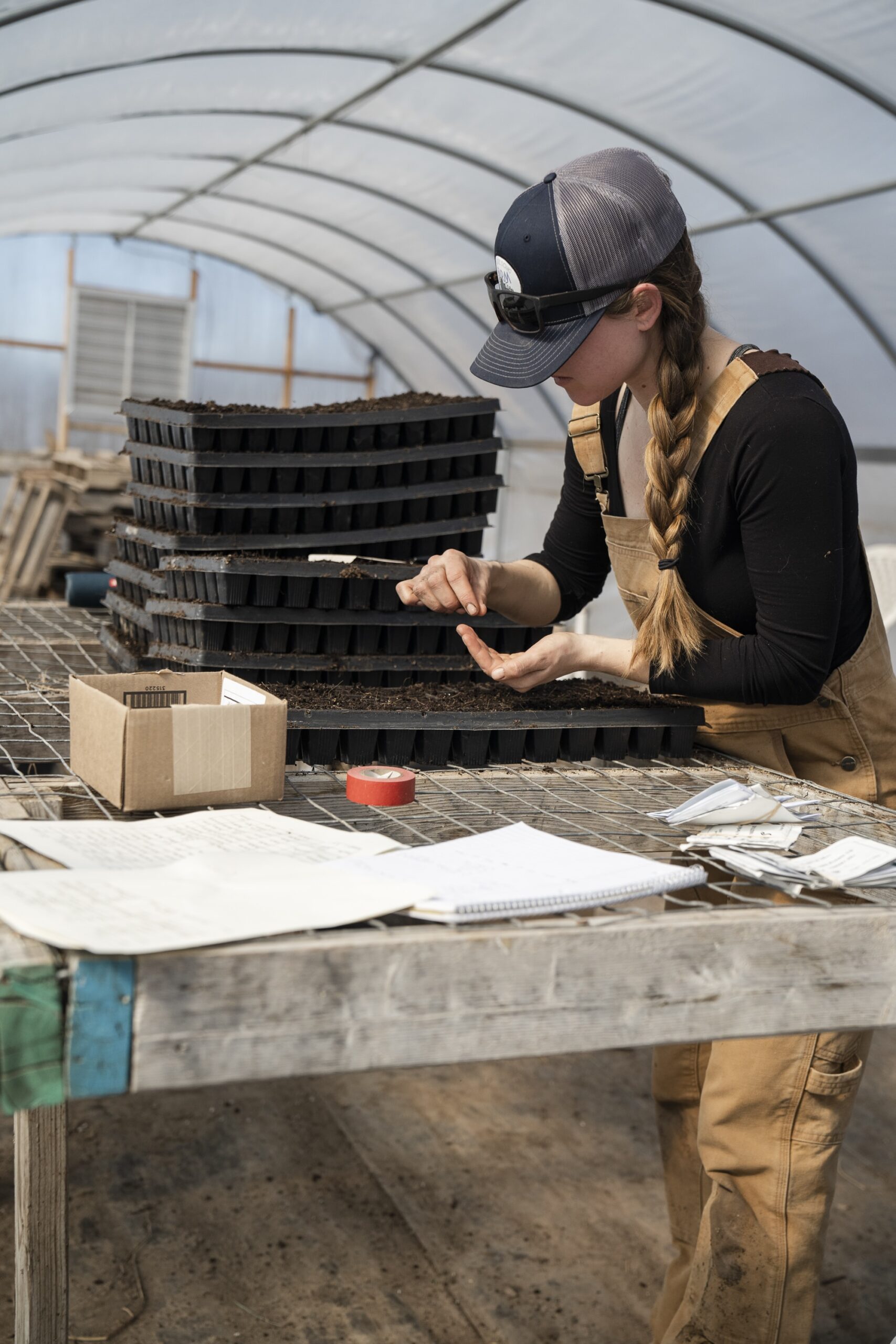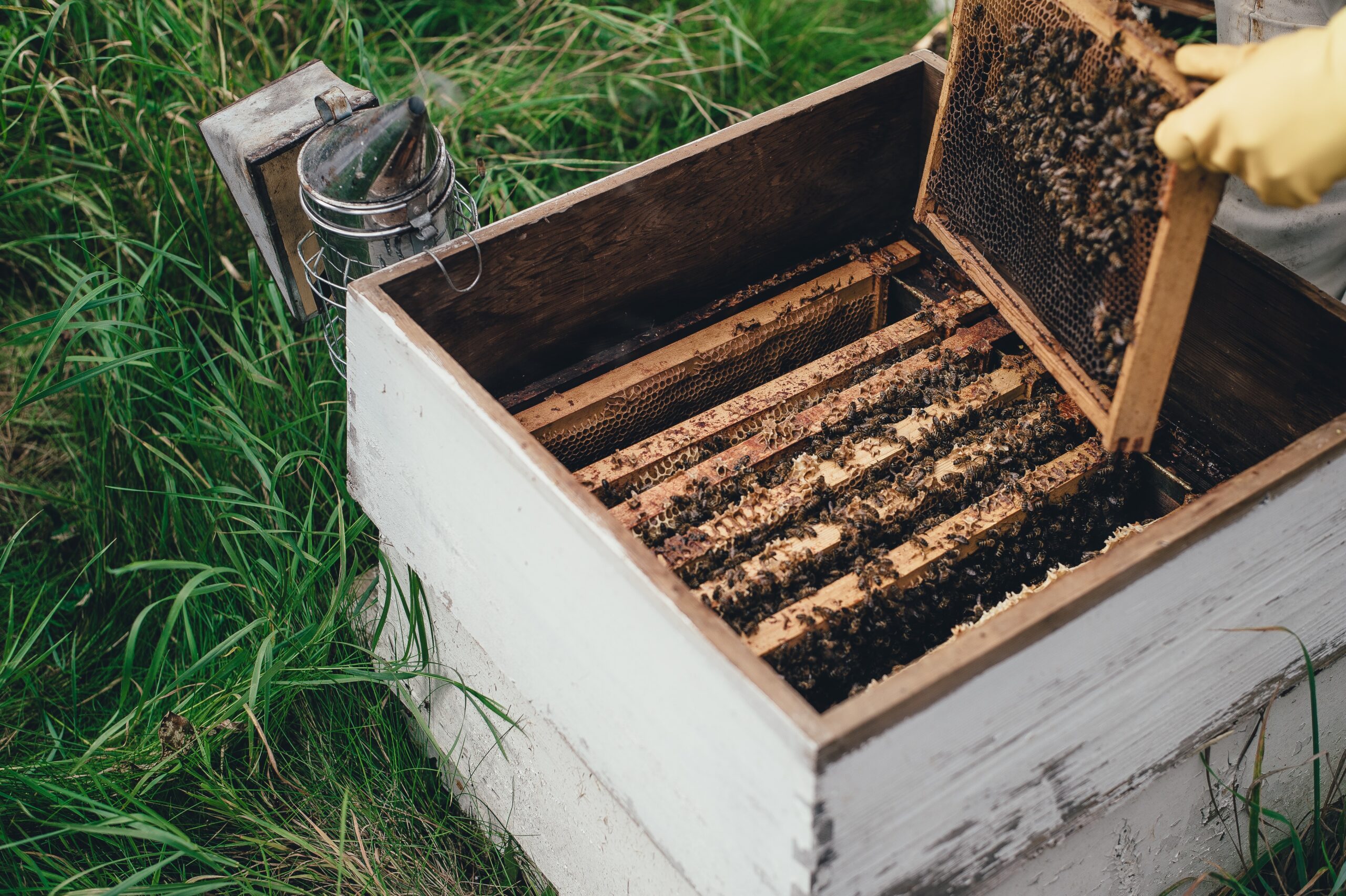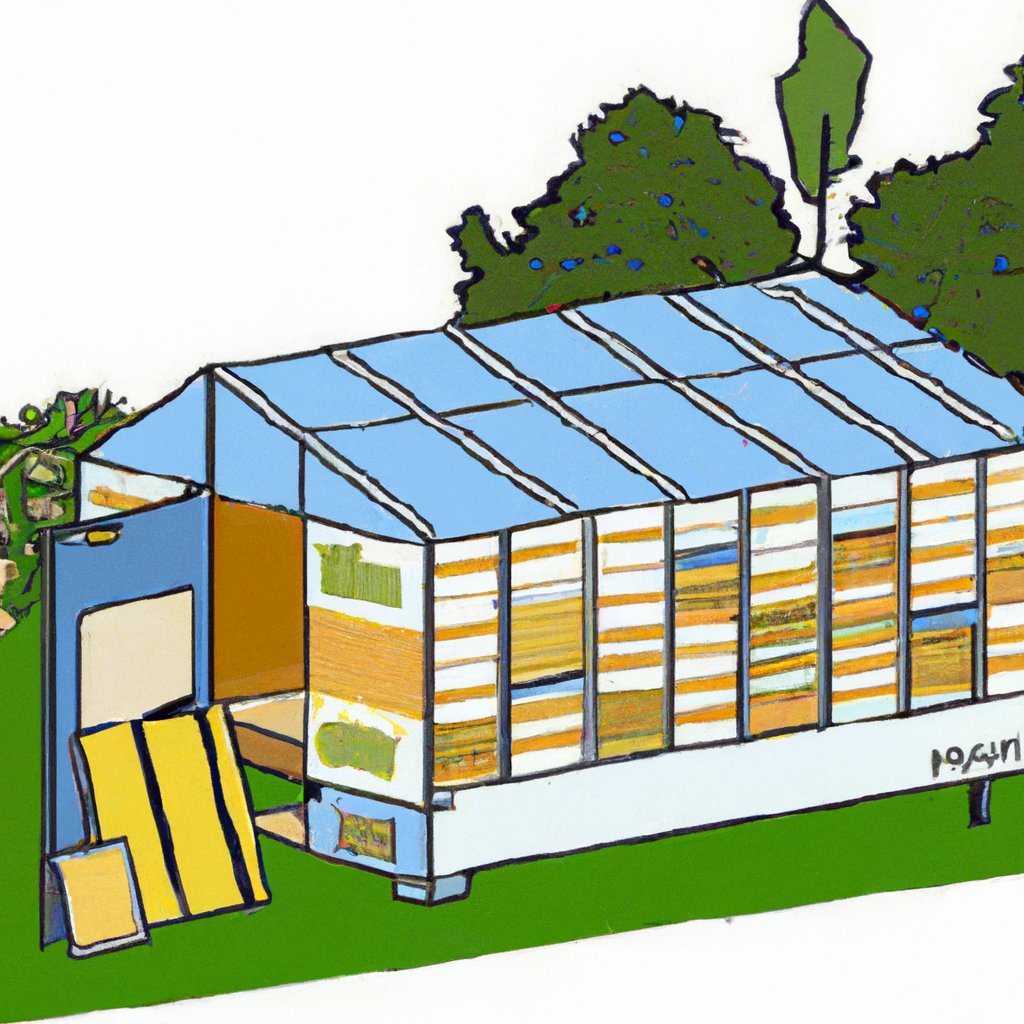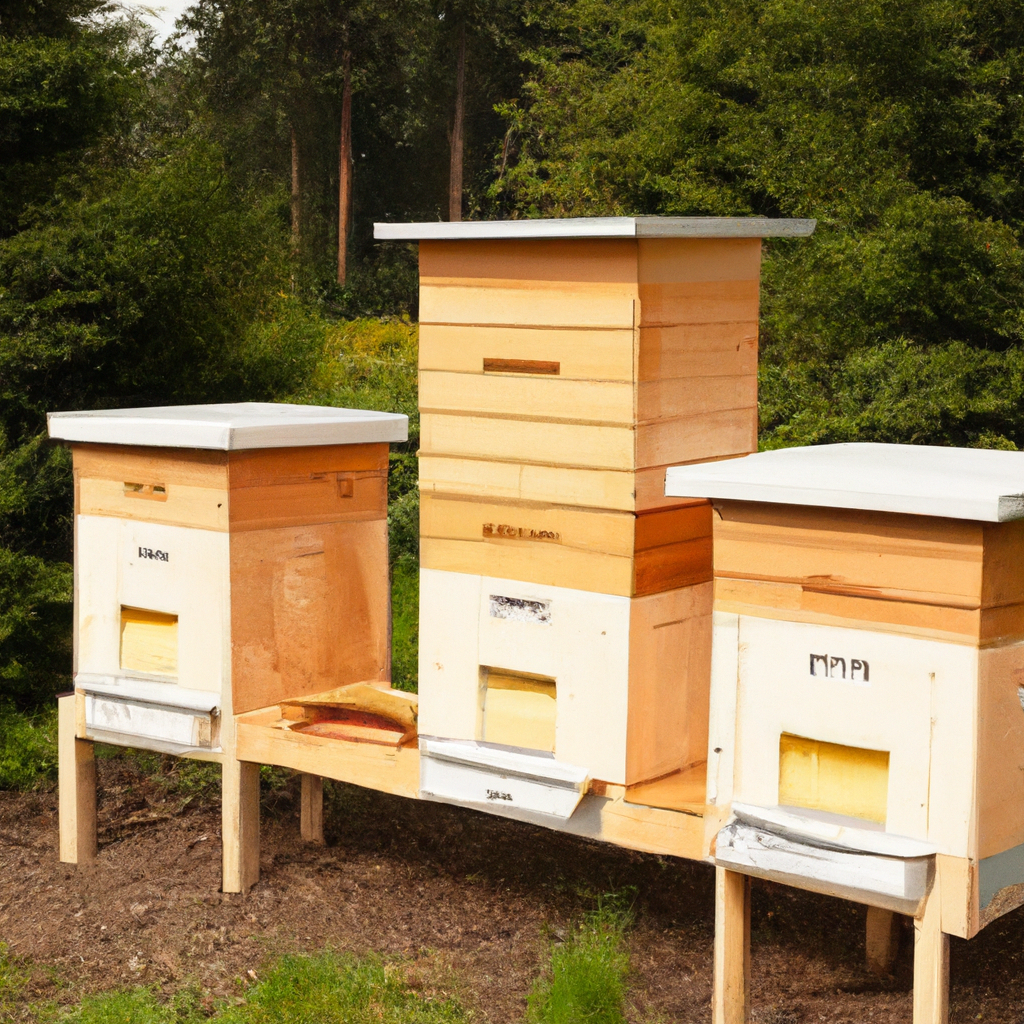
You’re curious about whether it’s possible to use a greenhouse for beekeeping, right? Well, you’re in for a treat! In this article, we’re going to explore the wonderful world of beekeeping and how it can be enhanced by the use of a greenhouse. Whether you’re already an experienced beekeeper or just starting out, we’ll take you on a journey to discover the benefits of combining these two practices. So, get ready to uncover the secrets of using a greenhouse for beekeeping and unlock a whole new level of productivity and enjoyment in your buzzing adventures!

This image is property of images.unsplash.com.
Advantages of Using a Greenhouse for Beekeeping
Beekeeping is a fascinating and rewarding hobby that not only supports the important role of bees in pollination but also provides an opportunity to harvest delicious honey and other bee products. One way to enhance and optimize beekeeping practices is by utilizing a greenhouse. A greenhouse provides several advantages for beekeepers, including protection from extreme weather, an extended beekeeping season, a controlled environment for bee health, and increased honey production.
Protection from Extreme Weather
One of the significant advantages of using a greenhouse for beekeeping is the protection it offers against extreme weather conditions. Bees are sensitive to adverse weather such as strong winds, heavy rain, and extreme temperatures. By confining the bees within the controlled environment of a greenhouse, you can shield them from harmful weather elements. This protection not only ensures the safety and well-being of the bees but also minimizes the risk of damage to the hives and other equipment.
Extended Beekeeping Season
Another benefit of utilizing a greenhouse for beekeeping is the extension of the beekeeping season. In many regions, beekeeping is limited to certain months due to cold winters or unpredictable weather. However, with a greenhouse, you can create a microclimate that allows the bees to thrive and continue their activities throughout the year. The regulated temperature and controlled environment inside the greenhouse provide optimal conditions for the bees to remain active, resulting in an extended beekeeping season and increased productivity.
Controlled Environment for Bee Health
Maintaining a healthy and thriving bee colony is crucial for a successful beekeeping endeavor. A greenhouse offers a controlled environment that allows you to monitor and regulate various factors influencing bee health. Temperature, humidity, and airflow can be adjusted to create the ideal conditions for your bees. Additionally, by confining the bees within a greenhouse, you can limit their exposure to pesticides, pollutants, and other potential threats from the external environment, promoting the overall well-being of the colony.
Increased Honey Production
One of the ultimate goals of beekeeping is to harvest high-quality honey. Utilizing a greenhouse can significantly contribute to increased honey production. The extended beekeeping season and controlled environment create favorable conditions for the bees to collect nectar and produce honey year-round. The availability of a consistent and diverse source of nectar within the greenhouse, combined with the optimal conditions, can lead to a higher honey yield. This increased honey production not only allows for personal consumption but also creates the potential for selling or sharing honey with others.
Choosing the Right Greenhouse for Beekeeping
When it comes to selecting a greenhouse for beekeeping, there are several factors to consider to ensure optimal performance and functionality. The size and layout of the greenhouse, the choice of materials and construction, as well as ventilation and temperature control, are crucial aspects to evaluate.
Size and Layout
The size of the greenhouse plays a significant role in determining how many hives you can accommodate and the overall working space available. It is essential to select a greenhouse size that can comfortably house your desired number of hives while leaving adequate space for maneuverability and ease of maintenance. Additionally, consider the layout of the greenhouse to optimize access to the hives, shelving, and workstations. Planning the layout carefully can save time and effort during routine inspections and hive management tasks.
Material and Construction
The choice of greenhouse materials and construction is crucial for durability, insulation, and longevity. Consider using materials that provide insulation and maintain a stable temperature inside the greenhouse. Common greenhouse materials such as polycarbonate, glass, or polyethylene can offer different levels of insulation and light transmission. The construction of the greenhouse should also prioritize sturdiness and stability to withstand external factors such as wind and extreme weather conditions.
Ventilation and Temperature Control
Proper ventilation and temperature control are vital for maintaining a suitable environment for your bees. Ensure that the greenhouse design includes sufficient venting options, such as windows, vents, or fans, to allow for proper airflow. Adequate ventilation helps regulate the temperature, reduce humidity, and prevent the buildup of moisture, which can lead to mold or fungus growth. Installing automated temperature control systems, such as thermostats or heaters, can further assist in maintaining a consistent and optimum temperature for the bees’ well-being.
Preparing the Greenhouse for Beekeeping
Before introducing bees into the greenhouse, proper preparation is necessary to ensure a safe and conducive environment. The following steps outline the essential tasks involved in preparing the greenhouse for beekeeping.
Clearing and Leveling the Ground
Start by clearing the area where the greenhouse will be located. Remove any debris, plants, or other obstructions that might interfere with the assembly and functionality of the greenhouse. Additionally, ensure that the ground is level to provide a stable foundation for the structure.
Installing Foundation and Flooring
Choose an appropriate foundation for your greenhouse, such as concrete, wood, or gravel. The foundation serves to level the greenhouse and prevent moisture from seeping into the structure. Once the foundation is in place, install the flooring material of your choice. Options include gravel, pavers, or concrete, depending on your preferences and budget. The flooring should be easy to clean and maintain to ensure a sanitary environment for the bees.
Setting Up Shelving and Workstations
To optimize the functionality of your greenhouse, set up shelving units and workstations strategically. Shelving allows for organized storage of beekeeping equipment, hive tools, and other supplies. Workstations provide a designated area where you can perform tasks such as hive inspections, honey extraction, and equipment maintenance. Consider the appropriate height and accessibility of the shelves and workstations to facilitate a smooth workflow and minimize strain on your body during beekeeping activities.
Stocking the Greenhouse with Beekeeping Equipment
Once the greenhouse is prepared, it’s time to stock it with the necessary beekeeping equipment. The right selection and arrangement of hive types, frames, foundation, and provision of food and water are essential to create a thriving environment for your bees.
Choosing Suitable Hive Types
Selecting the appropriate hive types for your greenhouse is crucial for the well-being of the bees and ease of management. The most common hive types are Langstroth, top bar, and Warré hives. Each hive type has its advantages and considerations, so it’s important to research and choose the one that aligns with your beekeeping goals and preferences. Consider factors such as ease of inspection, hive maintenance, and compatibility with the greenhouse space.
Installing Frames and Foundation
Frames and foundation provide the structure upon which bees build their honeycombs. Install frames with foundation into the hives before introducing the bees. The foundation provides a guide for the bees to build their comb and facilitates efficient honey extraction. Be sure to choose foundation sizes that match the hive frames and consider using wax foundation as bees readily accept it. Proper installation of frames and foundation helps promote healthy brood development and honey production.
Providing Access to Food and Water
To sustain the bees within the greenhouse, ensure a sufficient and accessible supply of food and water. Planting nectar-rich flowers within the greenhouse allows bees to forage and collect nectar, essential for honey production. Additionally, strategic placement of water sources, such as shallow dishes or bee-friendly water features, provides bees with a readily available water supply. By providing abundant food and water sources, you support the growth and development of a strong and thriving bee colony within the greenhouse.

This image is property of images.unsplash.com.
Maintaining the Greenhouse Environment for Bees
Maintaining a stable and suitable environment in the greenhouse is crucial for the health and productivity of your bees. Regular monitoring of temperature and humidity, managing ventilation and airflow, and implementing effective pest and disease control measures are essential maintenance tasks.
Monitoring Temperature and Humidity
Temperature and humidity play significant roles in bee health and productivity. Monitor the internal temperature of the greenhouse using thermometers and maintain a range suitable for the bees’ optimal functioning. Similarly, regularly measure and maintain the humidity levels within the appropriate range to prevent issues such as excessive moisture and mold growth. Understanding the ideal temperature and humidity requirements for your bees will help you make the necessary adjustments to create a comfortable and conducive environment.
Managing Ventilation and Airflow
Proper ventilation and airflow are essential for maintaining a healthy greenhouse environment. Ensure that vents, windows, or fans are regularly checked and cleaned to allow for proper air circulation. Keep an eye on the placement and functionality of these ventilation elements to prevent stagnant air, excessive humidity, or poor air quality. Adequate ventilation helps remove excess heat, regulate humidity, and prevent the buildup of harmful gases, ensuring a fresh and optimal atmosphere for your bees.
Controlling Pests and Diseases
Pests and diseases can pose significant threats to the health and productivity of your bees. Implementing effective pest control measures, such as regular hive inspections and the use of bee-safe treatments, helps prevent infestations and control the spread of pests. Additionally, monitor your bees for signs of diseases or infections, such as deformed wing virus or American foulbrood, and take prompt action to mitigate their impact. Regular hive maintenance, proper sanitation, and beekeeper education on disease prevention are essential for maintaining a healthy and disease-resistant bee colony within the greenhouse.
Managing Bees in the Greenhouse
Once the greenhouse is set up and the bees have been introduced, effective management strategies are crucial to ensure the well-being and productivity of your colony. This involves tasks such as introducing bees to the greenhouse, monitoring hive health and behavior, and providing adequate forage and pollination opportunities.
Introducing Bees to the Greenhouse
Introducing bees to the greenhouse requires careful planning and timing. Ensure that the greenhouse environment is fully established and conducive to their needs before introducing the bees. Consider acquiring bees from reputable sources and follow appropriate procedures for transferring them into the hives within the greenhouse. Monitor the bees closely during the introduction process to ensure they adapt well to their new environment and continue to thrive.
Monitoring Hive Health and Behavior
Regular monitoring of hive health and behavior is crucial to catch any potential issues or abnormalities early on. Conduct routine inspections of the hives to check for signs of disease, pests, or queen performance. Monitor hive weight and food stores to ensure an adequate supply of honey and pollen. Observe the behavior of the bees, such as foraging activity, brood pattern, and general temperament, to assess their overall health and productivity. By staying vigilant and responsive to any changes in hive health or behavior, you can address issues promptly and maintain a strong and thriving colony.
Providing Adequate Forage and Pollination
To ensure the productivity of your bees, it is essential to provide them with adequate forage and pollination opportunities within the greenhouse. Choose a diverse range of flowering plants that bloom at different times to provide a continuous supply of nectar and pollen. This ensures a varied diet for the bees and supports their overall health and honey production. Additionally, consider incorporating techniques such as companion planting and crop rotation to optimize pollination within the greenhouse. Maximizing pollination opportunities benefits not only your bees but also enhances the yield and quality of crops and plants grown within the greenhouse.

This image is property of images.unsplash.com.
Harvesting Honey and Bee Products from the Greenhouse
The ultimate reward of beekeeping in a greenhouse is the opportunity to harvest honey and other bee products. Proper timing and preparation for harvest, followed by careful extraction and processing of honey, are essential for maximizing the quality and quantity of your yield.
Timing and Preparation for Harvest
Harvesting honey requires careful timing and preparation. It is important to choose the right time when the bees have capped the honeycomb cells, indicating that the honey is mature and ready for extraction. Prepare for the harvest by gathering the necessary equipment, such as a bee suit, smoker, hive tool, and honey extraction equipment. Ensure that you have a clean and sanitary extraction area within the greenhouse to prevent contamination of the harvested honey.
Extracting and Processing Honey
Extracting honey from the comb is a delicate process that requires precision and cleanliness. Remove the honey-filled frames from the hive and carefully brush off any bees before transferring them to a dedicated honey extraction space. Using a honey extractor, extract the honey from the frames, taking care not to damage the comb or introduce impurities. Filter the extracted honey to remove any debris or wax particles. Store the harvested honey in clean, airtight containers in a cool and dark location within the greenhouse or your designated storage area.
Collecting Other Bee Products
In addition to honey, beekeeping in a greenhouse offers opportunities to collect other valuable bee products. Beeswax, propolis, and pollen are important resources that can be harvested and utilized. Beeswax can be collected by melting and filtering the wax cappings from honey extraction. Propolis, a resinous substance, can be harvested by scraping it off the frames or hive components. Pollen, a nutrient-rich food source, can be collected using pollen traps attached to the hive entrances. Proper harvesting techniques and storage of these bee products ensure their quality and usability for various applications.
Overwintering Bees in the Greenhouse
Overwintering, the process of preparing bees for the winter months, is a critical aspect of beekeeping to ensure the survival and thriving of the colony. By implementing appropriate strategies, you can protect your bees from the harsh winter conditions and support their survival until the arrival of spring.
Preparing Hives for Winter
Preparing the hives for winter involves several steps to ensure the bees remain warm and well-fed. Inspect the hive for any damage or potential weak points that may allow cold air to enter. Consider insulating the hive with materials such as foam or straw to provide extra protection against temperature fluctuations. Reduce the size of the hive by removing excess frames or boxes to minimize the bees’ need to heat a larger space. Ensure that the hive has an adequate supply of honey for the bees to sustain themselves during the winter months.
Providing Supplemental Feeding
Supplemental feeding during the winter can help ensure the bees have enough food to survive until spring when natural forage becomes available. Prepare a suitable winter feed solution, such as sugar syrup, and feed it to the bees. Provide the feed in a manner that minimizes disturbance and excess moisture within the hive. Regularly monitor the food stores and, if necessary, continue supplementary feeding until the bees can sustain themselves solely on natural forage.
Insulating the Greenhouse
Insulating the greenhouse is essential to maintain a stable temperature for the bees during the winter months. Consider adding additional insulation, such as bubble wrap or thermal blankets, to key areas of the greenhouse to trap heat and prevent excessive heat loss. Pay attention to sealing any gaps or drafts that may allow cold air to enter. Maintaining a suitable and consistent temperature is crucial for the bees to conserve energy and survive the winter successfully.

Potential Challenges and Considerations
While utilizing a greenhouse for beekeeping offers numerous advantages, it is important to be aware of potential challenges and considerations. Addressing these challenges and making informed decisions can lead to a successful and rewarding beekeeping experience in a greenhouse.
Disease and Pest Control
Maintaining a pest and disease-free environment within the greenhouse can be challenging but is vital for the well-being of your bees. Implementing regular inspections, proper sanitation, and proactive pest control measures can help minimize these risks. However, be prepared to address potential issues promptly and seek professional advice or assistance if needed.
Pollination Limitations
Although a greenhouse provides a controlled environment for bees, it may not offer the same pollination opportunities as the open outdoors. Depending on the plants and crops you are growing, some may still require outdoor pollinators or specific pollination techniques. Research and understand the pollination requirements of your desired plants to ensure proper fertilization and successful crop yield.
Financial Investment and Maintenance
Establishing and maintaining a greenhouse for beekeeping requires a financial investment and ongoing maintenance. The construction and setup costs, as well as regular monitoring and upkeep, should be considered when determining the feasibility and long-term commitment to greenhouse beekeeping. Budgeting for equipment, supplies, and potential unforeseen expenses is crucial for a sustainable and successful operation.
Conclusion
Utilizing a greenhouse for beekeeping provides numerous advantages and opportunities to enhance your beekeeping experience. From protection against extreme weather to extended beekeeping seasons, controlled environments for bee health, and increased honey production, the benefits of using a greenhouse are undeniable. When choosing the right greenhouse, consider the size, material, construction, ventilation, and temperature control to optimize functionality. Proper preparation, stocking with beekeeping equipment, maintenance of the greenhouse environment, and effective management of bees are essential for successful greenhouse beekeeping. Harvesting honey and other bee products, overwintering bees, and addressing potential challenges and considerations contribute to a thriving and rewarding beekeeping experience. With careful planning, dedication, and a friendly approach, greenhouse beekeeping can be a truly fulfilling journey for any beekeeper.


